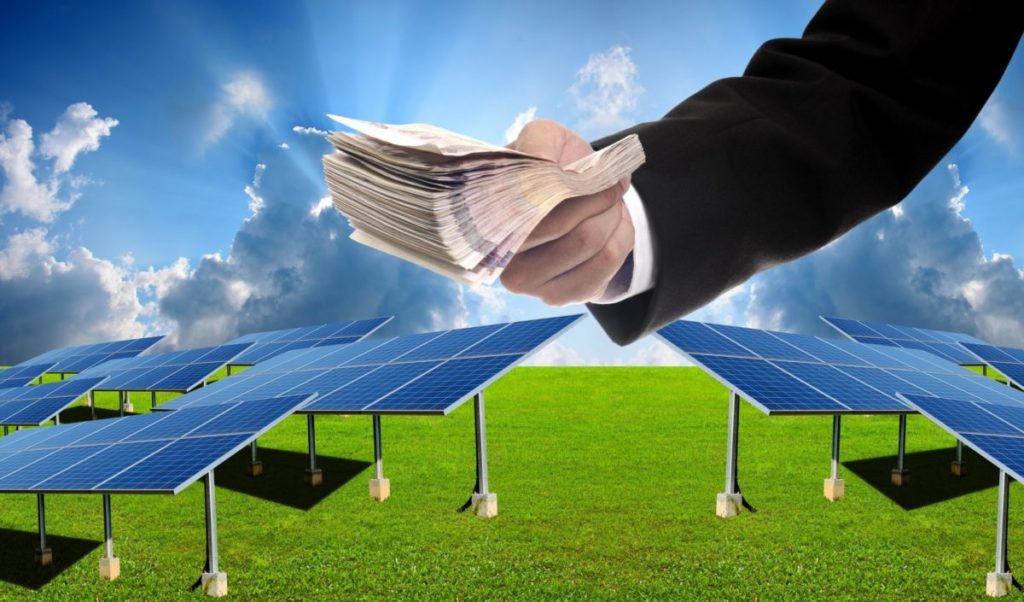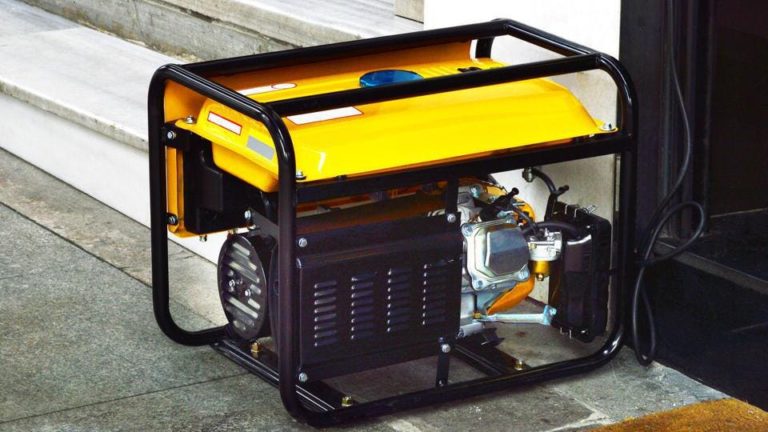If you’re considering switching to off-grid solar power, one of the most important factors to consider is financing.
While upfront costs can be steep, there are various incentives and financial models available that can help make your dream of sustainable energy a reality.
We will explore the different options for financing an off-grid solar project, including payback periods, return on investment (ROI), and potential tax credits or grants.
Whether you’re looking to power a small cabin or a large ranch, with the right financing strategies in place, going off-grid has never been more accessible.
Let’s dive into the details and find out how you can make your off-grid solar dreams a cost-effective reality!
Determine your budget and financing needs
Before you start looking into financing options, it’s important to have a clear understanding of your budget and financing needs. Consider the cost of the solar equipment, installation, and any additional expenses such as permits, inspections, and insurance.
This includes not only the cost of the solar equipment and installation but also any additional expenses such as permits, inspections, and insurance.
By carefully considering these factors, you can ensure that you have a comprehensive understanding of the total cost of the project and make informed decisions about your financing options.
To accurately determine your budget, you should research the cost of the solar equipment and installation for your specific system size and location.
This will give you a baseline understanding of the costs involved.
You should factor in any additional expenses such as permits, inspections, and insurance, which can vary depending on your location and the complexity of your project.
By carefully considering these factors, you can create a detailed budget and financing plan that takes into account all of the costs associated with your solar panel installation.
This will help you avoid any unexpected expenses and ensure that you have the necessary funds to complete your project successfully.
Research financing options
There are a variety of financing options available for off-grid solar projects, including government incentives, rebates, and loans. Research these options to determine which ones are best for you.
Off-grid solar projects offer a range of financing options, each with its own set of benefits and requirements.
To determine which options are best for your specific project, it’s essential to research government incentives, rebates, and loans.
Government incentives, such as tax credits and grants, can significantly reduce the upfront costs of your project.
Rebates, offered by local utilities and solar organizations, can also help offset the cost of your system.
Loans, including personal and commercial loans, can provide the necessary funding for your project, often with attractive interest rates and repayment terms.
To explore these financing options, you’ll need to research government programs and policies, as well as reach out to local lenders and solar organizations.
Some key resources to consider include the U.S.
Department of Energy’s Office of Energy Efficiency and Renewable Energy, the U.S.
Environmental Protection Agency’s (EPA) Energy Star program, and the Database of State Incentives for Renewables and Efficiency (DSIRE).
You may want to consult with a professional solar installer or financial advisor to ensure you’re making the most informed decision for your specific project.
By exploring these financing options and understanding their requirements and benefits, you can secure the funding needed to bring your off-grid solar project to life.
Government incentives
There are a variety of government incentives available for off-grid solar projects, including the Federal Investment Tax Credit (ITC) and state-specific incentives. These incentives can significantly reduce the cost of your solar project.
Are you considering an off-grid solar project but hesitant due to the upfront costs?
Fear not, for there are a variety of government incentives available to help make your clean energy dream a reality!
The Federal Investment Tax Credit (ITC) is a lucrative option that can significantly reduce the cost of your solar project.
Many states offer state-specific incentives that can further sweeten the deal.
These incentives can include tax credits, rebates, and other financial incentives that can help offset the upfront costs of your project.
For example, the ITC allows you to deduct 26% of the total cost of your solar project from your federal taxes.
This means that if your project costs $10,000, you can deduct $2,600 from your taxes, leaving you with a net cost of $7,400.
On top of that, many states offer their own incentives, such as rebates, grants, or tax credits.
In California, for instance, you can receive a rebate of up to $4,500 for a residential solar project, while in New York, you can receive a tax credit of up to $2,000.
These government incentives can significantly reduce the cost of your solar project, making it more accessible and affordable than ever before.
So why wait?
Take advantage of these incentives today and start enjoying the benefits of off-grid solar power!
Rebates and grants
Many utilities and organizations offer rebates and grants for off-grid solar projects. These can be a great way to reduce the upfront cost of your project.
If you’re considering an off-grid solar project, you should know that many utilities and organizations offer rebates and grants that can help reduce the upfront cost of your project.
These incentives can make a significant difference in the overall cost of your system, and can help make off-grid solar more accessible and affordable.
To find out if you are eligible for rebates or grants, you should research the programs offered by your local utility company and government agencies.
Many utilities offer rebates for customers who install solar systems, and some governments offer grants to help cover the cost of off-grid solar projects.
For example, the California Public Utilities Commission offers a Self-Generation Incentive Program (SGIP) that provides rebates for eligible renewable energy systems, including solar systems.
The program is designed to encourage the development and use of eligible distributed energy resources, such as off-grid solar systems.
The US Department of Agriculture offers a Rural Energy for America Program (REAP) that provides grants and loans to rural businesses and communities to help them purchase and install renewable energy systems, including off-grid solar systems.
By taking advantage of these rebates and grants, you can significantly reduce the upfront cost of your off-grid solar project and make it more affordable.
So, do your research and see what incentives are available in your area.
It could make a big difference in your decision to go off-grid with solar power.
Loans and leases
There are a variety of loan and lease options available for off-grid solar projects, including personal loans, home equity loans, and solar leases. Consider the pros and cons of each option before making a decision.
Looking to finance your off-grid solar project?
You’ve got several options to choose from!
Personal loans, home equity loans, and solar leases are all viable options, each with their own set of pros and cons.
Personal loans are a popular choice for off-grid solar projects because they offer flexibility and simplicity.
You can use the loan amount to purchase and install your solar system, and then pay back the loan over time.
The pros of personal loans include the ability to choose your own repayment schedule and interest rate, as well as the freedom to use the loan for other purposes if needed.
However, personal loans may have higher interest rates than other financing options, and you’ll be responsible for the entire loan amount if you default.
Home equity loans, on the other hand, use the equity in your home as collateral for the loan.
This can be a great option if you have a significant amount of equity in your home, as it can provide lower interest rates and longer repayment terms.
However, if you’re unable to repay the loan, you risk losing your home.
The pros of home equity loans include lower interest rates and longer repayment terms, while the cons include the risk of losing your home if you default.
Solar leases are another option for off-grid solar projects.
With a solar lease, you pay a monthly amount to use the solar system, rather than purchasing it outright.
The pros of solar leases include lower upfront costs and the ability to lock in a fixed monthly payment, while the cons include the risk of price increases over the life of the lease and the lack of ownership.
So, how do you choose the best option for your off-grid solar project?
Start by considering your financial situation, your long-term goals, and the specific needs of your project.
Crunch the numbers to determine which option offers the best balance of cost and benefit.
Also, be sure to carefully review the terms and conditions of any loan or lease before committing to it.
And finally, keep in mind that there may be tax incentives and other rebates available for off-grid solar projects, which can help offset the cost of financing.
If you’re considering financing your off-grid solar project, there are several options available to you.
Personal loans, home equity loans, and solar leases are all popular choices, each with their own set of pros and cons.
Personal loans can be a great option if you have a significant amount of equity in your home, as they can provide lower interest rates and longer repayment terms.
Home equity loans, on the other hand, use the equity in your home as collateral, which can provide a lower interest rate and a longer repayment term.
Solar leases, while not a loan, allow you to pay for your solar system over time, while also providing a fixed monthly payment that is typically lower than your current electricity bill.
It’s important to crunch the numbers and determine which option offers the best balance of cost and benefit for your specific project.
Be sure to carefully review the terms and conditions of any loan or lease before committing to it, as some options may have penalties for early termination or other fees that can add up over time.
Keep in mind that there may be tax incentives and other rebates available for off-grid solar projects, which can help offset the cost of financing.
By doing your research and considering all the options, you can choose the best financing solution for your needs and get the most out of your investment.].
When it comes to financing your off-grid solar project, you have several options to choose from, each with its own set of pros and cons.
Personal loans, home equity loans, and solar leases are just a few of the options available.
Personal loans offer flexibility in terms of repayment terms and interest rates, but may not provide the same level of security as home equity loans, which use the equity in your home as collateral.
Home equity loans, on the other hand, can provide a lower interest rate and longer repayment term, but may also come with penalties for early termination.
Solar leases, while not a loan, allow you to pay for your solar system over time, while also providing a fixed monthly payment that is typically lower than your current electricity bill.
Before deciding on a financing option, it’s important to consider your individual circumstances, such as your credit score, current debt obligations, and long-term financial goals.
By carefully evaluating these factors, you can choose the best financing solution for your needs and ensure that you get the most out of your investment in an off-grid solar system.
It’s important to research and compare different lenders and lease options to find the one that offers the best terms and lowest costs.
With the right financing solution, you can enjoy the benefits of off-grid solar power while minimizing the upfront costs and long-term expenses.
Calculate your return on investment (ROI)
Once you’ve determined your financing needs and selected a financing option, calculate your ROI to determine how long it will take for your solar project to pay for itself. Consider factors such as energy savings, tax incentives, and any revenue generated from selling excess energy back to the grid.
Calculating the Return on Investment (ROI) of your solar project is a important step in determining its financial viability.
Once you have determined your financing needs and selected a financing option, you need to consider factors such as energy savings, tax incentives, and any revenue generated from selling excess energy back to the grid.
To calculate ROI, you need to first determine the total cost of the solar project, including the cost of the system, installation, and financing.
Next, you need to estimate the annual energy savings and revenue generated from selling excess energy back to the grid.
This will involve analyzing your energy usage and billing data to determine how much energy you can save with solar panels and how much excess energy you can sell back to the grid.
Once you have these figures, you can calculate the ROI by dividing the total cost of the project by the annual energy savings and revenue.
This will give you the payback period, or the number of years it will take for the solar project to pay for itself.
For example, let’s say you estimate that your solar project will cost $15,000, and you will save $1,200 per year on your energy bills.
You can also expect to generate an additional $500 per year in revenue from selling excess energy back to the grid.
To calculate the ROI, you would divide $15,000 by $1,700 ($1,200 in energy savings + $500 in revenue).
This gives you a payback period of 8.8 years.
By considering factors such as energy savings, tax incentives, and revenue from excess energy sales, you can get a more accurate estimate of your ROI and make a more informed decision about investing in a solar project.
Calculating the Return on Investment (ROI) of a solar project is an essential step in determining its financial viability.
To calculate the ROI, you will need to determine the total cost of the project, estimate the annual energy savings and revenue, and then divide the total cost by the annual energy savings and revenue.
This will give you the payback period, or the number of years it will take for the solar project to pay for itself.
For example, let’s say you estimate that your solar project will cost $15,000, and you will save $1,200 per year on your energy bills.
You can also expect to generate an additional $500 per year in revenue from selling excess energy back to the grid.
Using the formula above, you would divide $15,000 by ($1,200 + $500), which equals 12 years.
This means that it will take 12 years for your solar project to pay for itself through energy savings and revenue.
By accurately estimating your ROI, you can make a more informed decision about investing in a solar project and determine whether it is a wise financial investment for your business or home.
Consider the long-term cost of ownership
While the upfront cost of an off-grid solar project may be higher than traditional grid-tied systems, the long-term cost of ownership can be significantly lower. Consider factors such as the lifespan of the system, maintenance costs, and potential future energy costs.
Choosing an off-grid solar system may have a higher upfront cost compared to traditional grid-tied systems, but its long-term cost of ownership can be remarkably lower.
One major factor is the system’s lifespan, with off-grid solar systems lasting up to 30 years or more, while traditional grid-tied systems typically have a lifespan of 10 to 15 years.
Off-grid solar systems require minimal maintenance, as they do not rely on the grid for power and do not require frequent battery replacements or expensive maintenance fees.
Furthermore, considering potential future energy costs, off-grid solar systems can provide a reliable and stable source of energy without the volatility of traditional energy sources.
In the long run, off-grid solar systems can save you thousands of dollars in energy costs, making the initial investment well worth it.
Seek out professional advice
Financing an off-grid solar project can be complex, so it’s important to seek out professional advice from a solar expert or financial advisor. They can help you navigate the various financing options and determine the best course of action for your specific situation.
Seeking professional advice from a solar expert or financial advisor is important when financing an off-grid solar project.
This type of project can be complex and daunting, and without the proper guidance, homeowners may end up with a system that does not meet their energy needs or one that is not cost-effective.
A solar expert can help assess the homeowner’s energy usage and determine the appropriate size and type of solar system needed.
They can also guide homeowners through the various financing options available, including government incentives, rebates, and loans.
A financial advisor can help homeowners analyze their budget and identify the best financial options for their specific situation, such as a lease, loan, or power purchase agreement.
With the right professional advice, homeowners can ensure that their off-grid solar project is successful and provides long-term energy savings.
Want More? Dive Deeper Here!
Hey there! If you’re the type who loves going down the rabbit hole of information (like we do), you’re in the right spot. We’ve pulled together some cool reads and resources that dive a bit deeper into the stuff we chat about on our site. Whether you’re just killing time or super into the topic, these picks might just be what you’re looking for. Happy reading!






